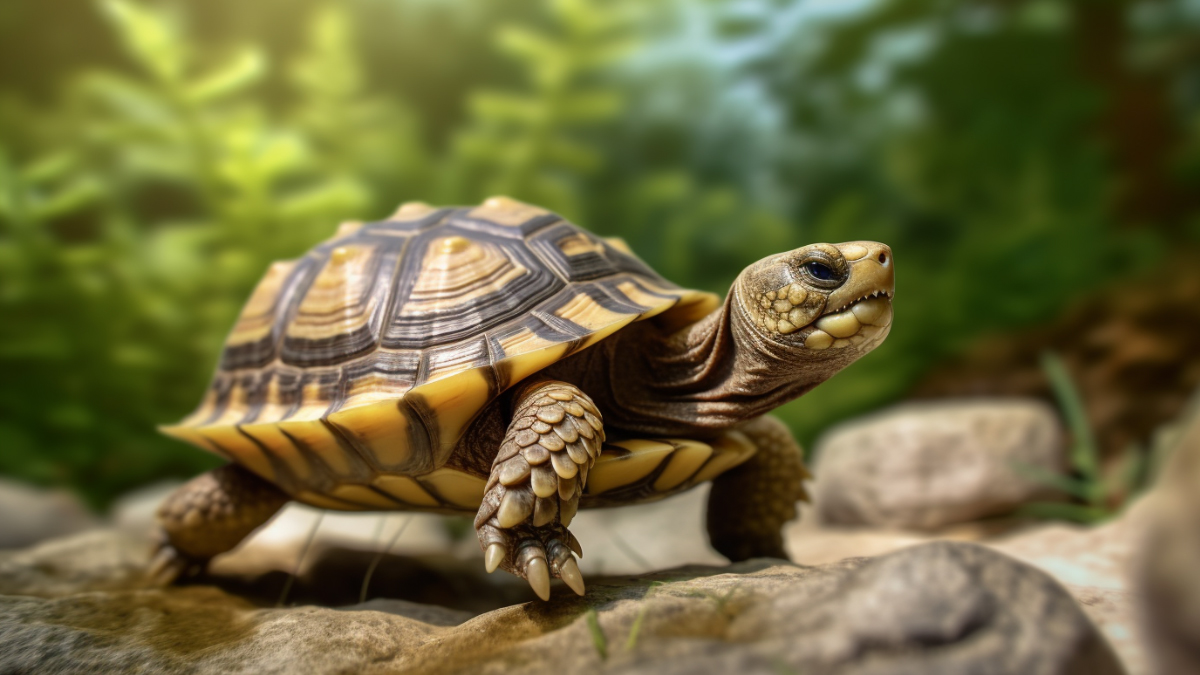Why My Tortoise Keeps Trying To Climb The Walls: 6 Possible Reasons
Tortoise might seem weird or even scary to someone who is new to the tortoise experience. A tortoise’s tendency to try to escape its confinement is one of its behavioral traits.
Now come to the question, why does my tortoise keep trying to climb the walls? Your tortoise may climb walls out of curiosity, as a means of escape. This can happen in response to the surroundings, during mating, or under stress. The other cause behind this behavior is fatigue. If your tortoise is in a cage for a long time, it can attempt to go outside.
We’ll dig into the realm of tortoise behavior to learn the reason behind your pet’s unexpected behavior. Stay with this article!
Why Does My Tortoise Keeps Trying To Climb The Walls?
Contents
It becomes clear that climbing walls is an unusual and puzzling action for tortoises after determining their natural behavior. Tortoises cannot efficiently climb because they lack the physical features necessary to do so, such as gripping limbs.
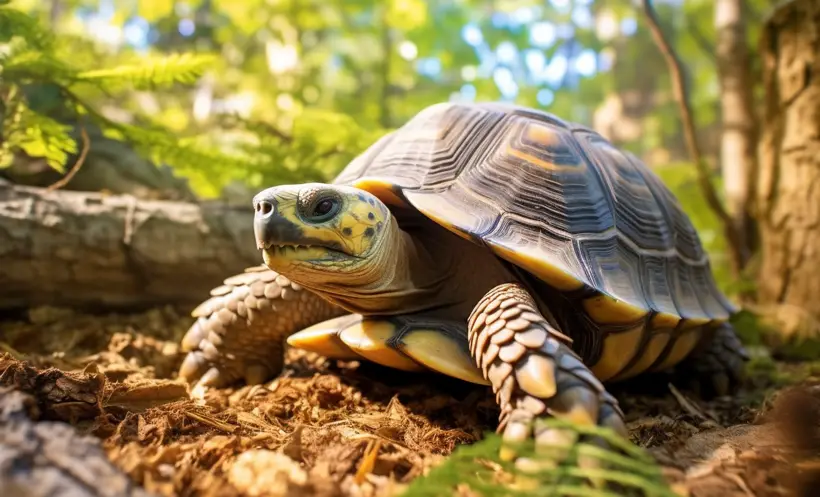
They are not suited for climbing vertical surfaces. Rather, their strong legs and thick shells are made for terrestrial existence.
For tortoise owners, this departure from their typical behavior creates questions and worries. It suggests that some strange curiosity, discomfort, or some underlying factor might be behind this unexpected behavior. Let’s explore the different reasons your turtle would be inspired to attempt this strange feat:
Cause 1: Curiosity
Tortoises are inherently curious animals. However, they do so at their own leisurely rate. Their natural curiosity may prompt them to explore their environment, which occasionally involves attempting to scale tall objects. They can be looking for a vantage position or just curiously investigating uncharted territory.
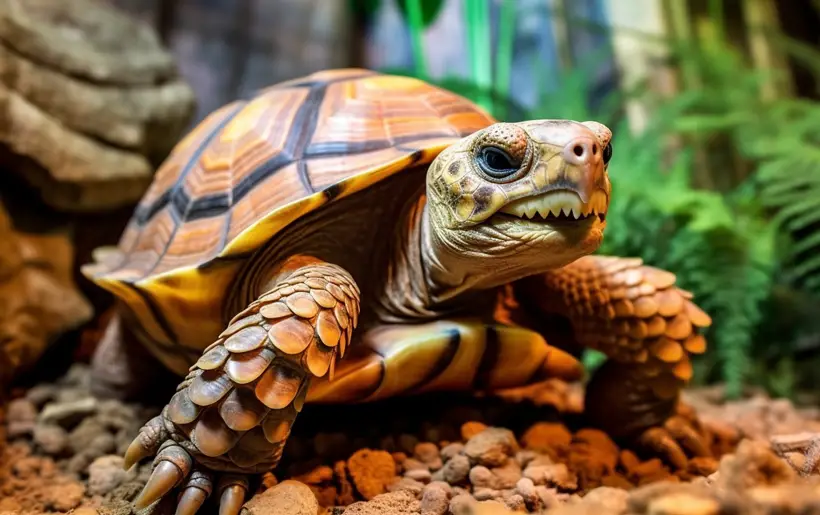
Cause 2: Escape Effort
In disguise, some tortoises are skilled escape artists. They may try risky escapes if they feel cramped or think their confinement is inappropriate. They may use wall climbing as a means of achieving independence or a better environment.
Cause 3: Environmental Considerations
Tortoises are extremely perceptive to their surroundings. They can be attempting to climb walls as a reaction to their circumstances. They can try to go to a warmer location, get some sunshine, or locate a new microclimate.
Cause 4: Mating Patterns
Male tortoises may exhibit greater activity, including climbing, especially during mating season. They can be making an effort to cross a barrier in order to find a possible spouse.

Cause 5: Discomfort or Stress
Unusual conduct is only one of the many ways that stress or discomfort may emerge. Climbing walls might be your tortoise’s method of showing their concern if they’re under stress. Also, it can be a sign of things like loud sounds, or even an underlying health problem.
Cause 6: Fatigue Behavior
If the tortoise is in the cage for a long time then it can do this behavior. It will get bored by its surroundings and will try to escape the cage. So, this can also be a possible reason for tortoises to keep trying to climb the walls.
In order to handle your tortoise’s climbing habit, it is essential to comprehend these probable motives.
Practical Solutions to Climbing Behavior
Now let’s look at some realistic remedies to stop this habit and protect your shelled friend:
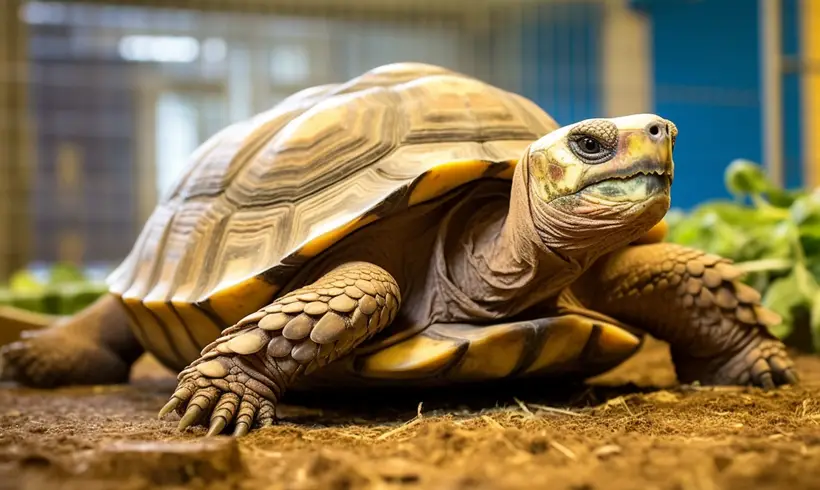
Protect the Container
Making your tortoise’s enclosure escape-proof comes first and foremost. Look for any cracks, crevices, or weak spots that might be facilitating their attempts to elude detection. Here are some tips for securing their domain:
- Check the enclosure for weaknesses and fill any openings.
- To deter climbing, use obstacles like mesh or fence.
Improve the Surroundings
Make sure the habitat for your tortoise offers a cozy and engaging setting. When their requirements are satisfied, turtles or tortoises are happiest. Here’s how to make that happen:
- A variety of plants should be available for grazing and hiding places.
- Provide both bright and shady locations to accommodate their preferred temperatures.
- Create an intriguing landscape by using barriers and organic objects.
This video can provide you with an overview of tortoise living place setup.
Reduce Stress
Tortoises flourish in a relaxed setting. Eliminate possible stresses from their environment:
- Limit disruptions and loud noises in the area of their habitat.
- Keep a regular daily schedule.
- Make sure the enclosure is placed in a calm spot away from busy pedestrian areas.
Examine Your Health
If the tendency to climb persists after modifying the surroundings, speak with a vet who specializes in reptiles. Sometimes strange conduct is a symptom of underlying health issues. A veterinarian may do a comprehensive checkup and advise on any required medical procedures.
Think about Companionship
Despite the fact that tortoises are often solitary animals, having a suitable partner might help them feel less lonely. Also, it may lessen their urge to climb in order to engage with people. To prevent disputes, make sure the two tortoises are comparable in size and disposition.
These actions will help your tortoise live in a safe, exciting, and stress-free environment. You should help reduce their tendency to climb and assure their general well-being.
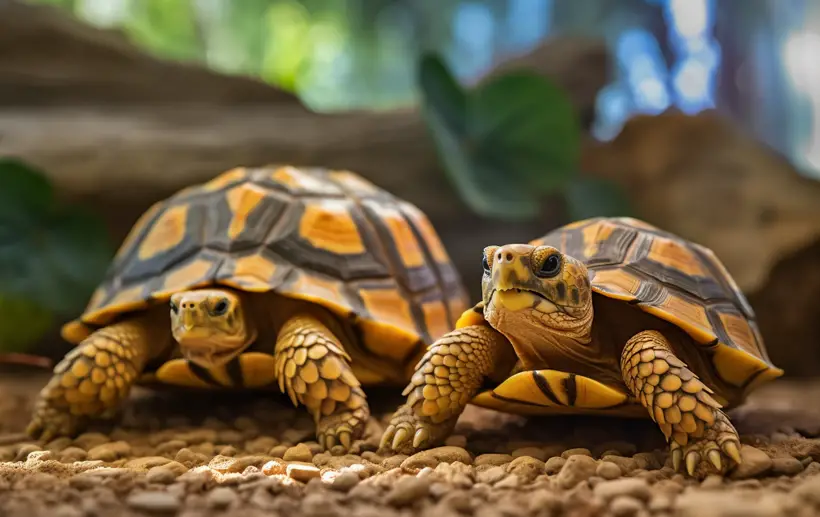
FAQs
These are some commonly asked questions by people about the climbing habit of tortoises.
While occasional attempts at climbing might not be detrimental, continuous wall climbing can be dangerous. Injury, shell damage, or stress might result.
The Russian tortoise is commonly known for climbing. They are outstanding climbers and diggers, and these abilities come easily to them. If the ground is too shallow for them they may frequently switch to climbing instead.
Glass can make up a portion of a tortoise cage, but it is not the best material to employ exclusively. In a totally glass habitat, the appropriate ventilation and exposure to natural light may not be possible for tortoises. To satisfy their habitat demands, a mix of materials including glass, wood, and wire mesh is frequently recommended.
Conclusion
Potential causes of climbing activity in tortoises include curiosity and efforts at escape. Other causes can be environmental conditions, mating activities, and stress. They may explore vertical spaces out of natural curiosity. Escape attempts might result from dissatisfaction with surroundings or being confined alone.
A desire for warmth, sunlight, or a certain climate might also be the driving force behind them. In order to find potential partners during mating season, males may climb. This behavior, which is often triggered by stress, shows that the environment needs to be altered.

